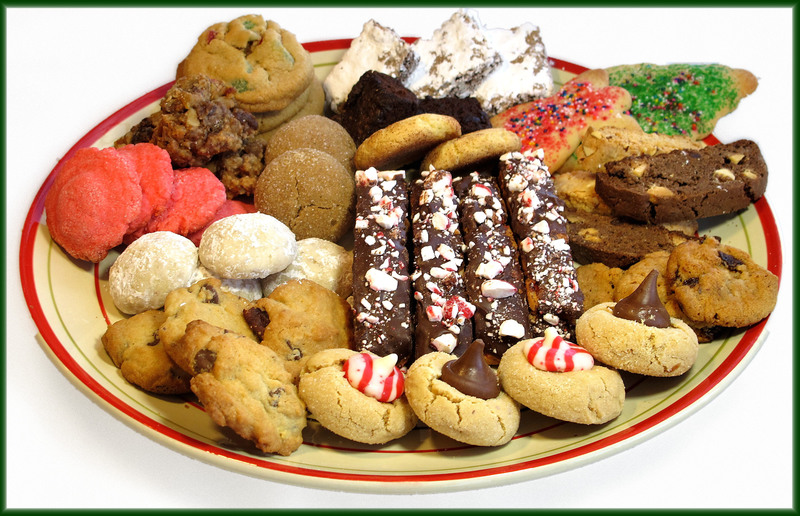Holiday cookies are on display everywhere we turn, just in time to assemble a plate for Santa. How exactly did this get started? Like many of our holiday traditions, leaving cookies for the midnight visitor on Christmas Eve is probably linked to both mythological stories as well as practices adopted from our immigrant ancestors.
The oldest of these myths comes to us from the Norse. Over a thousand years ago, children heard about the god Odin and his travels through the night sky during the winter solstice, riding an eight-legged horse named Sleipnir. People would set out hay, hoping Odin would stop for Sleipnir to enjoy a snack and leave candy in gratitude.
Traces of this story can be seen in Belgium, where hay and carrots are left outside the house to feed the horse Santa rides. In Denmark and Holland, children leave hay for the horse that pulls the sleigh full of gifts. It’s probably not a coincidence that Odin’s steed had eight legs, while today’s Santa Claus has eight reindeer.
Another possible history for the plate of cookies may be related to the celebration of Saint Nicholas, a Greek clergyman from the fourth century whose feast day is celebrated by many Christians. His generous visits to the needy are likely behind the practice of children leaving food for his visit and setting their shoes outside so Saint Nicholas would leave coins for them.
Perhaps we should consider the early decorations found on Christmas trees as a reason for offering food for the traveling gift-giver. Originally revered in ancient times for their year-round greenery, evergreen boughs and eventually entire trees became familiar decorations for the winter holidays.
Over time, the German tradition of decorating the tree with fruits and nuts and treats transformed into draping the branches with colorful lights and ornaments. Perhaps when the tree no longer held food for the annual visitor, we began leaving out a plate of cookies for Santa.
No matter how the traditions began, they have become familiar rituals in many homes. Some people bake homemade chocolate chip cookies, while others are certain Santa prefers Oreos. A glass of milk or mug of hot chocolate are beverages provided in American homes, while the Irish often serve a pint of Guinness. And although their diet consists mainly of tender shoots and lichen, reindeer would surely appreciate fresh carrots.
The lovely plate of cookies in the photo features a variety of home-baked treats, from the cinnamon-laced snickerdoodles to cherry-flavored Jello cookies to the confectioners-dusted Mexican Wedding Cookies. These are also called snowdrops, Russian tea cakes or butterballs, but the recipe is the same: butter, flour, vanilla and chopped nuts formed into delicious rounds. If you bake these, be sure to save some for Santa.
Snickerdoodles
1 1/2 C flour
1/2 t baking soda
1/4 t cream of tartar
1/2 C softened butter
1/2 C sugar
1/3 C packed brown sugar
1 egg
1 t vanilla
1/4 C sugar
2 t cinnamon
Sift the dry ingredients together in a mixing bowl; set aside. Combine the butter and sugars in a large bowl and beat until smooth. Add egg and vanilla; beat until fluffy. Add dry ingredients and mix until combined. Form dough into 1-inch balls, flatten slightly and place on a large plate. Cover with plastic wrap and refrigerate for at least 1 hour (or up to 3 days). When ready to bake, preheat oven to 350 F. Line a cookie sheet with parchment paper; set aside. Combine 1/4 C sugar with cinnamon in a small bowl. Roll each ball of dough through the mixture and place on prepared cookie sheet two inches apart. Bake until edges are set, about 9 minutes. Allow to cool for 10 minutes before serving; store in an airtight container. Yield: 2 dozen cookies.
Mexican Wedding Cookies
1 C unsalted butter
1/2 C sugar
2 t vanilla
1 C finely chopped pecans
2 C flour
1/2 cup confectioners sugar
Preheat oven to 325 F. Line a cookie sheet with parchment paper; set aside. Cream butter and sugar in a large bowl. Stir in vanilla. Add flour and nuts, mixing well to combine. Roll pieces of dough into walnut-sized balls. Bake until set, about 18 to 20 minutes. While cookies are still hot, use a mesh strainer or sieve to coat them with confectioners sugar. Yield: 3 dozen cookies.
Jello Cookies
2 1/2 C flour
1 3/4 C sugar
1 T baking powder
1 t salt
3/4 C butter
1 egg
1/4 C milk
1 t lemon juice
1/2 C jello mix (1 box)
Preheat oven to 325 F. Line a cookie sheet with parchment paper; set aside. Combine flour, sugar, baking powder and salt in a large mixing bowl, stirring to combine. Add butter and blend completely with mixer set on lowest speed. Add milk and lemon juice, mixing until thoroughly blended. Transfer dough to a zip-top bag and add Jello mix. Knead dough until color is even and mix is well blended. Roll dough into 1-inch balls and place on prepared baking sheet. Bake until set, about 12 to 14 minutes. Allow to cool for 10 minutes before removing cookies to a rack.



















































